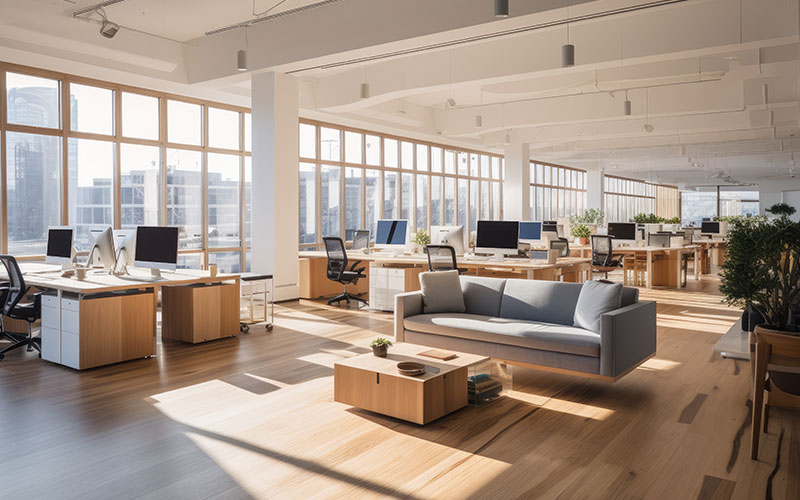Firstly, let’s understand what demountable walls are. Demountable walls, also known as movable walls or demountable partitions, are architectural systems that can be disassembled, relocated, and reinstalled at a new location. They consist of individual modular panels that connect to form larger wall sections, and they can be constructed using various materials such as glass, aluminum, steel, or composites.
Traditionally, businesses have preferred using drywall for constructing private offices and conference rooms. However, drywall is classified as a permanent asset within the building structure and is subject to a depreciation schedule similar to that of the building itself, usually spread over 39 years no matter the term of the lease. Consequently, this extended depreciation period results in reduced depreciation deductions, leading to higher annual tax liabilities for the company.
On the other hand, demountable walls can be classified as furniture and, when treated as such and used instead of drywall applications, are subject to Section 179 of the IRS tax code. This section enables businesses to deduct the entire purchase price of the product acquired or financed during the tax year. This deduction allows businesses to subtract the full purchase price directly from their gross income, potentially resulting in significant tax savings. Essentially, it’s a government incentive to encourage businesses to invest and grow.
Specifically, Section 179 of the U.S. Internal Revenue Code allows business owners to take an immediate expense deduction for purchases of depreciable business equipment, rather than capitalizing and depreciating the asset over time. This deduction can be taken if the equipment is purchased or financed, and the full amount of the purchase price is eligible for the deduction.
When planning your project and considering the potential tax implications, it’s crucial to understand the advantages of treating demountable walls as furniture and fixtures rather than using standard sheetrock wall construction.
Under the IRS Section 179 deduction, interior demountable walls can be classified as furniture and fixtures. This distinction provides a significant advantage: instead of capitalizing an asset and depreciating it over time in future tax years, businesses can lower their current-year tax liability by taking this deduction.
By leveraging the IRS Section 179 deduction alongside the current Bonus Depreciation Deduction, companies can save thousands of dollars in the first year of installing a demountable wall system. For the current tax year of 2024, the Bonus Depreciation Deduction is 60%. This bonus has been reduced from 80% in 2023 and will further decrease in the ensuing years to 40% for 2025, 20% for 2026, and will be phased out by 2027. Therefore, now is the time to start planning for this deduction in the Design Development phase of your project.
In summary, treating demountable walls as furniture and fixtures under IRS guidelines offers a compelling opportunity for businesses to reduce tax liabilities, save on upfront costs, and reinvest more capital into their operations. It’s a strategic move that can yield significant financial benefits in both the short and long term.
For further details on leveraging Section 179 and guidance on selecting and acquiring demountable walls for your upcoming project, don’t hesitate to contact me. I’m here to assist you in maximizing this opportunity and to discuss the broader benefits of employing a Furniture Manager for your project.











